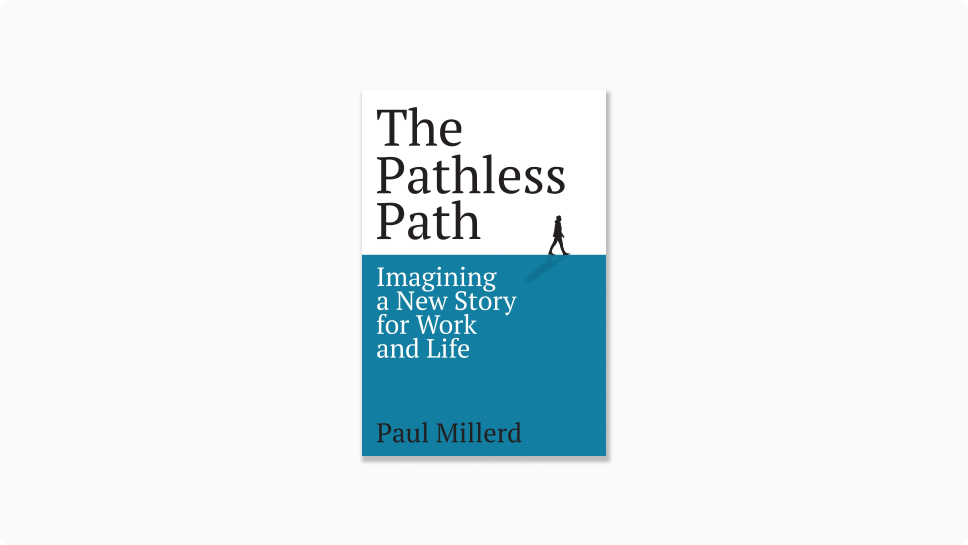🧠 High Level Thoughts
If you’re someone that’s struggling to find meaning in your day job and not excited by what the future holds, then I highly recommend giving this book a read.
I particularly enjoyed how the book addressed the pitfalls of following traditional career paths and it completely changed the way I thought about success.
Overall, the idea of the Pathless Path – the idea of carving out a unique personal and professional life that doesn’t necessarily follow a prescribed blueprint – hugely resonated with me. It’s a liberating concept that invites creativity and personal agency into one’s career planning. This notion is empowering, especially in a world that often values conformity over individuality.
💎 Top 3 Takeaways
- It’s possible to build a life built around liking work.
- The default path expects us hack the system and do absurd things in order to succeed, but you don’t actually need to play anyone else’s game in order to succeed.
- We can redefine what success looks like to us.
💭 Top 3 Quotes
- “Making life changes requires overcoming the discomfort of not knowing what will happen. Facing uncertainty, we make long mental lists of things that might go wrong and use these as the reasons why we must stay on our current path. Learning to have a healthy distrust of this impulse and knowing that even if things go wrong, we might discover things worth finding can help us open ourselves up to the potential for wonderful things to happen.”
- “Many people I talk to are convinced that the formula for living on their own terms is saving up enough money. I wish they knew what I know: the longer we spend on a path that isn’t ours, the longer it takes to move towards a path that is. Money might help pay for therapy, time off, and healing retreats, but it won’t help you come to a place where you really trust and know that everything will be okay.”
- “On the pathless path, the goal is not to find a job, make money, build a business, or achieve any other metric. It’s to actively and consciously search for the work that you want to keep doing… It’s a shift from the mindset that work sucks towards the idea that you can design a life around liking work”
📒 Summary & Notes
The Two Paths
The Default Path
- The Default Path is the path of working hard to get good grade, make more money, and get ahead.
- We think the only path available to us is the one we’re on or the one we’ve seen other people like us do.
- We like to think that once we ‘make it’ we’ll be able to find ourselves and be happy, but the longer we stay at a company the more we just become what the company wants instead.
- Plus, life never works as we expect. We work hard but get laid off. We make lots of money but have no time to enjoy it.
The Pathless Path
- The Pathless Path is an alternative to the default path and work on stuff that matters to you
- It’s a path “we cannot even see is there and we do not recognise it” (David Whyte, The Three Marriages). In other words, it’s about realising it’s okay to be on a path that feels uncertain and to embrace adventure.
What We Get Wrong
- We learn to be hoop jumpers early on in life – doing stuff that would give us the best chance at getting into the best university and landing the best job.
- E.g. at school I did extra-curricular stuff not because I necessarily enjoyed it but because it would help me get into law school. At uni, I chose modules and my dissertation based on the likelihood of getting a top grade. I was playing the game of ‘student’ and not acting my mind.
- We’re attracted to the default path because it offers us certainty and it’s often hard to ignore the prestige of certain jobs (lawyer, doctor, etc.)
- We want to be part of what C.S. Lewis calls the ‘inner ring’: “… in all men’s lives at certain periods… one of the most dominant elements is the desire to be inside the local Ring and the terror of being left outside.” And it takes “conscious and continuous effort” to avoid the power of the inner ring.
- When we see our friends talking about and admiring certain career paths, we feel compelled to do the same.
- We only really start asking important questions about what we’re doing with our life during crisis moments. Andrew Taggart calls these ‘existential openings’, which happen in two different circumstances:
- Way of loss i.e. things that matter to us are taken away
- Way of wonderment i.e. we feel incredibly inspired
- The Catholic and Protestant understandings of ‘work’ has continued to influence modern society. Catholics see work as a duty. Protestants believe we all have a ‘calling’, and working hard towards our calling determines our relationship with God
- Everything in life reinforces our believe that hard work is good, so we never question it.
- We have an expectation work should be ‘meaningful’ and help us to thrive in all areas of our life, but it’s very hard for a business to actually do this because we find ‘meaning’ in so many different things e.g. it’s not just joyful experiences, but overcoming obstacles and going through setbacks can give us meaning.
- Many jobs involve doing pointless tasks and a lot of wasted energy
Awakening
- To design a life that doesn’t prioritise work you should start underachieving at work
- Following the Pathless Path will feel uncertain, but you need to keep going and embrace “the spirit of the fool” (George Leonard) i.e. the idea that you’re going to feel clumsy as you learn lots of new things
- When leaving the Default Path it’s usual to have contradiction in your life, where you double down on pursuing your career even though there’s so much evidence telling you that you shouldn’t.
- Journal prompt: “How are you complicit in creating the conditions you say you don’t want?” (Jerry Colonna)
- We try hard to be ‘good workers’, but there’s often a disconnect between what is good for the company we work for (profits, happy clients etc.) and what is good for us which leads to this feeling of burnout
- Burnout often has the ‘dynamics of mourning’ (Professor Freudenberger), where you’re losing something within yourself
- We live in a time of ‘total work’ (Andrew Taggart), where work dominates every aspect of our life and we identify primarily as a ‘worker’ above everything else
The First Steps
- Prototype your life beyond full-time work by doing what you want to do alongside your day job, until you’re comfortable enough to quit
- We often rely on coping mechanisms (drink, vacations, job changes, etc.) to tolerate long-term misery in a job.
- But, if we adopt a state of wonder (noticing beauty and possibility in life) we begin imagining the benefits of following an uncertain path
- We can only embracy possibility, though, if we overcome our ‘ought to’ self where we feel like quitting our job is an abdication of responsibility.
- We don’t need to have everything figured out before we quitting. It may be better to pursue a more vague ‘aspirational journey’, which Agnes Callard defines as the slow process of “trying on the values that we hope one day to possess.”
- Find and speak to people who have already taken the pathless path you’re interested in taking (the ‘path experts’)
- Following the pathless path is scary. Tim Ferriss’ “fear setting” reflection exercise is good if you want to reframe the fear:
- This is the exercise:
- Write down the change you are making.
- List the worst possible outcomes.
- Identify actions you could take to mitigate those actions.
- List some steps or actions you might take to get back to where you are today.
- What could be some benefits of an attempt or partial success?
- What is the cost of inaction in three months, 12 months, and in a few years?
- This is the exercise:
Wisdom of the Pathless Path
- “We must let go of the life we have planned, so as to accept the one that is waiting for us.” (Joseph Campbell)
- Our shift to noticing the possibilities of life are pretty predictable:
- First, we notice our suffering and low-grade anxiety from pursuing our current path
- Second, curiosity re-emerges and we start trying new things.
- Third, we want to continue doing these non-work activities.
- Fourth, we write.
- The default path convinces us we’ll be happy when we retire, but this isn’t necessarily the case. The pathless path, however, encourages us to be happy today.
- The default path has many ‘fixed points’ that society tells us we should value (homeownership, reaching a certain net worth etc.). The pathless path encourages us to find our own unique ‘fixed points’ that are more meaningful to us.
- On the default path, many of us are paying a ‘misery tax’ (Thomas J. Bevan), which is spending on stuff that keeps us going and functioning in a job. The pathless path helps us redefine our relationship to money and what a ‘rich life’ looks like to us.

